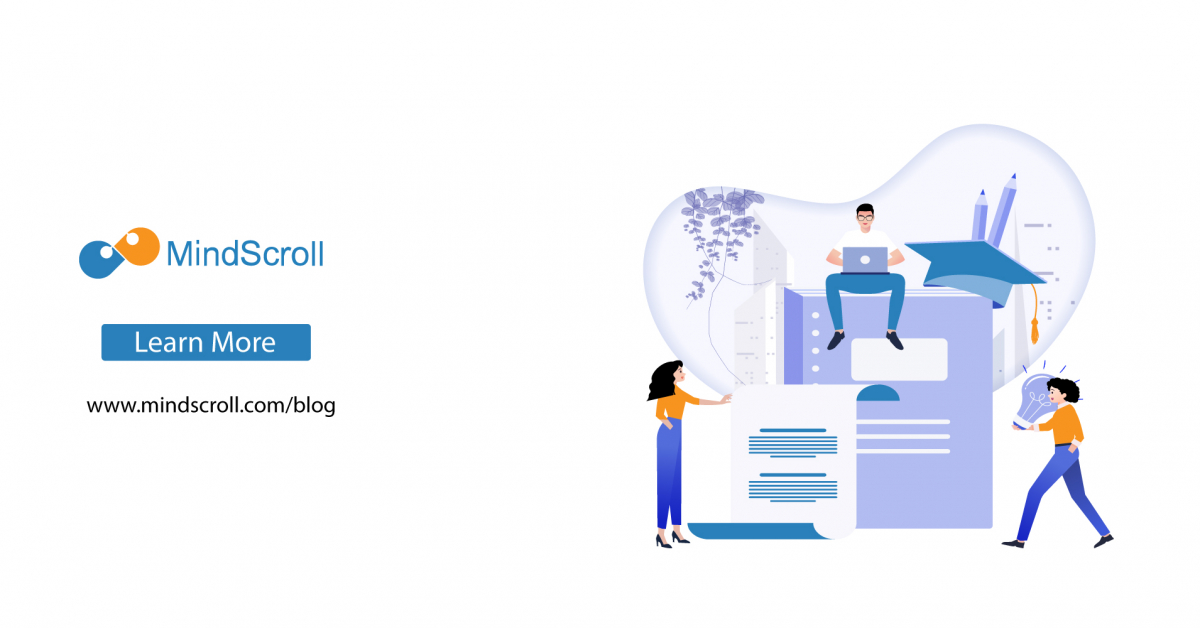Today’s market is no more limited with the geographical boundaries of the countries, irrespective of the industry it belongs to. Organizations have been developing and growing globally, adopting technologies and resources thus, increasing revenue and reducing cost.
With the technological advancements in market, it is easy to bring the operations at centre, however, bringing the diversified workforce at organization’s core values in a cost-effective manner is a major concern. Thus, Training and developing them, becomes a major focus for growing and leading enterprises. Organizations are still struggling with the enterprise wide training and bringing the workforce at one standardized platform.
A recent research conducted by Bersin Deloitte suggests, that still, 35% of organizations are dependent on the traditional offline method for the course and training development, whereas only 6% have grown and developed as a market leader and are concerned about numbers, along with the external and internal changes.
E-learning facilitates the training process to happen with data and figures rather than on intuitional feelings. The use of data, has built up huge growth opportunities in the market during the past 5–10 years. This brings a direction for every small as well as medium scale enterprise to drive smoothly.
As seen the learning need of today’s generation workforce has been moving towards the content which is engaging, personalized, relevant and accessible- anytime, anywhere just like google. Integrating technology with your training process, would facilitate not only in supporting users’ need but also in optimizing returns, where you can measure individual knowledge and interaction, observe each of their behavior and apply machine learning for reaching the business outcome.
Unlike classroom training happening at a set time, venue and in accordance to the organization, E-learning happens on employee’s call. We now have the ability to grow and develop; technology has enabled us to do the things as and when required.
E-learning proves to be helpful in overcoming major short-comings of ILT and at time complementing it to make a greater impact on employee’s knowledge:
a. Serving Refreshment:
Learning demands content to be repeated/refreshed at appropriate gaps in order to create an impact on learner’s memory and result higher returns. Unlike ILT, online training doesn’t involve any expense for conducting refreshment training and can be implemented as many times as required.
b. Self-Service:
E-learning stands as the backbone for employee’s retention capabilities facilitating learners to retrieve answers on their own and retain longer in memory, bridging the gaps in their knowledge.
c. Assessments:
Individual’s level of knowledge decides the confidence they possess. Measuring their knowledge depth pre-and post-training and then designing content accordingly do makes an impact on learner’s behaviour. MindScroll allows you to create an assessment, upload on platform, get the responses, and watch robust analytics, prior to designing content in specific direction.
d. Advancement in Technology:
With increased flexibility, accessibility, real-time data availability, feedback, machine learning, scalability…. the aspiration for an e-learning platform has converted into a ‘need’ of training function.
Employees bring higher returns when they have high confidence level which depends on the level of knowledge they imbibe.
The famous Kirkpatrick Model sets a standard for evaluating the effectiveness of your training in four easy levels, Reaction, Learning, Behaviour, and Results. Developing your content in accordance with the standard of industry, do facilitates in reaching geographical heights.
Organizations have to remember one important aspect, adopting technology and providing it to employees don’t do all your job. They need to ensure; their content engages employees and fulfills the requirement of each learner, proving and meeting every standard.
Developing an effective content for fetching higher returns from training should ensure the following steps are performed
1. Set Object (Reaction):
Training people on each course at a scheduled date and time does not fulfill the training requirements, rather adds to the cost. Checking how learners have responded to your training programs and at what level is their current knowledge is… gives you a clear idea of setting a specific purpose for conducting training, and then deciding on, whether it has to be for refreshment or for bringing the learners at an advanced level?
For a refreshment training you can simply design small videos, or cases for learners to recall the content.
2. Check with Knowledge Level (Learning)
Check what knowledge do your employees need to imbibe and what ladder do you need to climb. Assessing employees using questionnaire, cases, role plays and measuring the gap in their knowledge level on the specific topics, would allow you to take your content in the right direction fulfilling each of the learner’s requirement safely.
3. Behaviour
Before deciding on what you want your employees to do, it is important to check what are they doing. What knowledge and process are employees applying on their job, are they going in right direction or do they need to be brought on the right path? Checking these deviations would allow you to be specific with the requirement rather going with a pre-designed training module.
4. Results
Results are one such parameter that allows you to think over the next step. The outcome of these searches would give you an idea of the places, where your training has impacted positively along with the analysis of knowledge gaps in between. Track the reason and design the path towards higher productivity in the organization.
5. Design Content
Your content decides the usefulness of training in the organization. Don’t go for designing too much stuff rather pack some useful and impactful information that leaves long footprints on learner’s mind.
While analysing do realize the specific formats being understood by learners in one go.
E-learning equips you with all historical as well as the prevailing data, allowing you the space to correlate them and predict what needs to be changed for achieving the better outcome. It develops individual learner’s profile, where you can pick data at the granular level (data of individuals belonging to each question and course).
MindScroll, a new age learning platform, assists you with easy course management and upgradation option. You can start with hundred employees and scale up to thousands of them, without any fear. The team goes far beyond the limits for helping and assisting the clients with no time boundaries and designing the road for increasing their ROI. Providing maximum benefits, customizing the platform as per your requirements and helping you with all upgraded technology are no challenge for MindScroll.
LMS, Learning Management System, Cloud LMS, Sales Training, Product Training, Learning Technologies, Corporate Learning Strategy, Corporate LMS, ILT, Instructor Led Training, Blended Learning, Online Assessments, LMS Benefits, Training Effectiveness, LMS Characteristics




